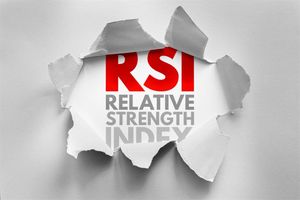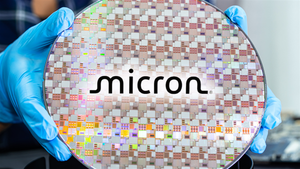
Cupertino, CA – September 11, 2025 – Apple's highly anticipated iPhone 17 series, featuring the groundbreaking ultra-thin iPhone Air and the powerful new A19 chip, officially launched this week. Despite significant advancements in design and processing power, initial market reception has been surprisingly subdued, leading to an immediate downturn in Apple's stock (NASDAQ: AAPL) performance, wiping over $112 billion from its market capitalization within two days of the announcement.
The tech giant's latest lineup, which includes the iPhone 17, iPhone Air, iPhone 17 Pro, and iPhone 17 Pro Max, aims to redefine the smartphone experience. However, a perceived lack of "groundbreaking innovation" and a "disappointing AI story" has left investors and consumers alike with muted excitement, prompting a "sell-off" that signals shifting expectations for the industry leader.
Apple's "Awe Dropping" Event Unveils Slimmest iPhone Yet, But Sparks Investor Skepticism
Apple's annual "Awe Dropping" event on Tuesday, September 9, 2025, served as the grand stage for the unveiling of the iPhone 17 series, a lineup designed to push the boundaries of mobile technology. The spotlight shone brightest on the all-new iPhone Air, a revolutionary ultra-slim model measuring an astonishing 5.6mm thick, effectively replacing the previous "Plus" variant. Crafted with a polished titanium frame, the iPhone Air, starting at $999, promises a premium, lightweight feel and features a 6.5-inch Super Retina XDR display with ProMotion technology. Pre-orders commenced on Friday, September 12, with general availability in over 63 countries slated for Friday, September 19.
Central to the iPhone 17 series' performance is the new A19 chip, with the standard iPhone 17 and iPhone Air housing the A19 chip, and the Pro models featuring the more advanced A19 Pro chip. Built on 3nm technology, Apple (NASDAQ: AAPL) boasts a 1.5x faster CPU and over 2x faster GPU for the A19 compared to the A15 Bionic. The A19 Pro chip further elevates this, delivering up to 40% faster sustained GPU performance. Both chipsets are equipped with boosted 16-core Neural Engines, crucial for the enhanced on-device generative AI capabilities under the banner of Apple Intelligence. This focus on local AI processing, coupled with a new thermal management system including a vapor chamber in Pro models, underscores Apple's commitment to both performance and user privacy.
Beyond raw power, the iPhone 17 series introduces several significant hardware and software enhancements. Ceramic Shield 2 offers three times better scratch resistance and reduced glare for the front display, with Pro models extending this protection to the rear. A long-awaited upgrade, ProMotion display technology with adaptive refresh rates up to 120Hz, is now standard across the entire lineup, from the base iPhone 17 ($799) to the iPhone 17 Pro Max ($1,199). The Pro models also boast a new heat-forged aluminum unibody design, chosen for its lightweight properties, strength, and superior thermal performance. All models ship with iOS 26, featuring a "Liquid Glass" design and an expanded suite of Apple Intelligence tools like Visual Intelligence, Live Translation, and a more capable Siri.
Despite these technological strides, the immediate market reaction was one of "muted excitement." Analysts, including figures often cited like Ming-Chi Kuo and Mark Gurman, noted a "sell-the-news" effect exacerbated by extensive leaks prior to the official announcement. The lack of a major Siri overhaul until 2026 and a generally "disappointing AI story" that didn't appear as revolutionary as some had hoped, contributed to investor caution. Apple's stock (NASDAQ: AAPL) fell 1.5% immediately post-event and plunged another 3.2% the following day, wiping over $112 billion from its market capitalization. This immediate downturn, while not entirely uncommon for Apple post-launch, signals Wall Street's increasing demand for truly transformative innovation and clear AI leadership in a competitive market.
Shifting Sands: Who Benefits and Who Struggles in the Wake of iPhone 17
The ripple effects of the iPhone 17 series launch extend far beyond Apple's (NASDAQ: AAPL) balance sheet, creating a complex web of winners and losers across its vast supply chain and the broader technology market. Key technological advancements and strategic shifts in sourcing are poised to reshape fortunes.
Among the clearest winners is TSMC (Taiwan Semiconductor Manufacturing Company) (TPE: 2330), Apple's exclusive supplier for the cutting-edge 3nm A19 and A19 Pro chips. These advanced processors, powering the entire iPhone 17 lineup, are projected to account for over 30% of TSMC's 2025 revenue, solidifying its dominant position in the semiconductor industry. Similarly, display giants Samsung Display (KRX: 005930) and LG Display (KRX: 034220) are set to benefit immensely, securing orders for the high-tier M14 OLED panels now standard across all iPhone 17 models, including the higher-volume standard and iPhone Air variants. Sony (TYO: 6758) also stands to gain from the significant camera upgrades, with increased demand for its high-quality image sensors for the new 48-megapixel and 24-megapixel camera systems.
The launch also presents significant opportunities for app developers and nimble accessory makers. Developers who quickly optimize their applications for iOS 26's new APIs, enhanced privacy controls, and particularly the on-device AI capabilities powered by the A19 chip's neural accelerators, can create more engaging and intelligent user experiences, leading to increased downloads and monetization. Accessory manufacturers who rapidly produce cases and peripherals tailored to the new iPhone Air's ultra-thin form factor and other design updates will capture a crucial initial market share.
However, not everyone emerges unscathed. Skyworks (NASDAQ: SWKS), a historical supplier of radio frequency (RF) components, faces a projected "material 20-25% reduction" in its content per iPhone within the 17 series. Apple's diversification of its RF supply chain, distributing orders to competitors like Broadcom, signals a significant revenue hit for Skyworks. Qualcomm (NASDAQ: QCOM), while still supplying 5G modems for most iPhone 17 models, faces a long-term threat. Apple's integration of its in-house C1X modem into the new iPhone Air hints at a strategic pivot to reduce reliance on Qualcomm, potentially leading to diminishing returns from Apple in future generations.
The fierce competition in the smartphone market intensifies for rivals like Samsung (KRX: 005930), Google (NASDAQ: GOOGL), and Xiaomi (HKG: 1810). The iPhone 17's universal 120Hz ProMotion displays, advanced camera systems, and the novel iPhone Air model exert considerable pressure on competitors to innovate further. While some rivals have poked fun at Apple's AI story as "underwhelming" compared to their own offerings, Apple's strong brand loyalty and ecosystem integration could lead to robust sales, forcing competitors to ramp up their R&D and marketing efforts to maintain market share, especially in the premium segment.
AI, Ultra-Thin Designs, and Geopolitics: iPhone 17's Wider Industry Resonance
The launch of the iPhone 17 series resonates deeply within the broader smartphone and tech industry, reflecting and accelerating several critical trends while sending strategic signals to competitors, partners, and regulators alike. Emerging in a premium smartphone market experiencing robust 8% year-over-year growth in the first half of 2025, the iPhone 17 is poised to elevate industry benchmarks.
A major thrust of the iPhone 17 is its deeper integration of Artificial Intelligence, powered by the A19 chip's built-in neural accelerators. Apple's "Apple Intelligence" suite within iOS 26, emphasizing on-device generative AI for features like live translation and Visual Intelligence, aims to deliver enhanced performance and privacy by minimizing cloud reliance. This move intensifies the ongoing "AI race" among tech giants; while Apple's AI story has faced some criticism for not being as revolutionary as rivals like Google (NASDAQ: GOOGL) and Samsung (KRX: 005930), it undeniably pushes the entire industry towards more sophisticated, embedded AI functionalities. Analysts predict that AI-enabled gadgets will account for 80% of all premium smartphone sales in the first half of 2025.
The introduction of the ultra-thin iPhone Air, rumored to be Apple's slimmest iPhone ever at 5.5mm, signals a significant return to the pursuit of extreme thinness, a design trend also seen in products from Samsung and Tecno. This aesthetic shift could redefine premium device design, though it inevitably raises questions about balancing sleekness with battery capacity and durability. Simultaneously, Apple (NASDAQ: AAPL) continues its strategic diversification of its global manufacturing operations, notably shifting production for US-bound iPhones from China to India and Vietnam. This "China Plus One" strategy, driven by geopolitical risks and tariffs, aims for greater supply chain resilience and will influence component sourcing and cost dynamics across the telecommunications sector for years to come.
These strategic moves create significant ripple effects. Competitors such as Google Pixel, which saw a remarkable 105% year-over-year growth in premium sales, and Samsung with its Galaxy S25 and upcoming Galaxy Fold7, will face intense pressure to innovate in AI, foldable technology, and design to maintain market share. Partners like TSMC (TPE: 2330) and memory suppliers Samsung and SK Hynix (KRX: 000660) remain critical beneficiaries of Apple's high-volume orders. However, Apple's long-term development of an in-house 5G modem, highlighted by the C1X modem in the iPhone Air, poses a significant threat to Qualcomm's (NASDAQ: QCOM) market dominance in mobile modems.
Regulatory scrutiny, particularly concerning antitrust and data privacy, looms large. Apple faces challenges from the EU's Digital Markets Act (DMA) and a US Department of Justice (DOJ) antitrust lawsuit, both targeting alleged monopolistic practices and App Store policies. The burgeoning field of AI also brings new legal frontiers, with class-action copyright lawsuits related to AI training data set to establish precedents for intellectual property rights in this evolving technological landscape. Historically, Apple's product launches, from the original iPhone's revolution of the mobile experience to subsequent ecosystem expansions, have consistently reshaped industry norms, prompting competitors to adapt and defining consumer expectations for device innovation and functionality. The iPhone 17's push, while facing initial skepticism, continues this tradition of setting new benchmarks for the entire smartphone industry.
The Road Ahead: AI Refinement, Foldables, and Emerging Market Battles
The launch of the iPhone 17 series initiates a period of dynamic evolution for Apple (NASDAQ: AAPL) and the broader tech industry, with both immediate challenges and long-term strategic imperatives. While initial market reaction has been tempered, Apple's pivots in design and technology hint at a clear future trajectory.
In the short term, analysts anticipate "modest gains" rather than a "supercycle" of upgrades, with Morgan Stanley forecasting approximately 232 million iPhones sold in fiscal 2026, leading to around $220 billion in revenue—a 2% increase. The iPhone 17 Pro and Pro Max are expected to lead early sales, but the strategic introduction of the iPhone 17 Air at $999 aims to capture the premium mid-range segment. This pricing strategy, coupled with eliminating lower storage options, is designed to boost average selling prices despite global smartphone demand fluctuations. Apple's stock (NASDAQ: AAPL) faces a "sell the news" effect, but Bank of America maintains a "Buy" rating, citing an expected strong upgrade cycle in fiscal 2025 and 2026, alongside robust services revenue growth. The broad adoption of ProMotion displays across all models and increased base storage are expected to drive mainstream user upgrades, with Apple Intelligence features poised for strong adoption if fully realized.
Looking further ahead, Apple's long-term strategy will heavily lean into AI, ecosystem expansion, and design innovation. While iOS 26 introduces Apple Intelligence, more significant AI advancements for Siri and other services are anticipated in 2026, potentially involving strategic partnerships or acquisitions to bolster capabilities. The iPhone 17 Air is viewed as a "transitional step" towards an eventual foldable iPhone, which analysts expect could debut as early as 2026. This focus on ultra-thin designs is crucial, particularly for markets like China where foldable phones are gaining significant traction, with a substantial portion of users indicating a willingness to switch to competitors like Samsung (KRX: 005930) if Apple doesn't offer a foldable by then.
Emerging markets present a dual landscape of opportunity and challenge. India, for instance, is a strong growth market where Apple projects double-digit growth, aiming to capture expanding middle-class segments. However, challenges persist in markets like China, where Apple faces declining market share, weak demand, and a local preference for foldables. The iPhone 17 Air's premium pricing might also prove a "tough sell" in some emerging markets where consumers might opt for the more feature-rich Pro models for a comparable price. Regulatory pressures, such as Indonesia's demands for local manufacturing and R&D facilities, also require Apple to strategically adapt its production and market access strategies. The intensified "AI race" and Apple's pursuit of ultra-thin designs will force competitors to accelerate their own innovations, while Apple's integrated ecosystem continues to challenge rivals to offer equally compelling and seamless user experiences.
Conclusion: An Evolutionary Step with Long-Term Strategic Significance
The launch of the iPhone 17 series on September 9, 2025, represents an evolutionary, rather than revolutionary, stride for Apple (NASDAQ: AAPL). While initial investor reaction was tempered by a "sell-the-news" effect and perceived incremental AI advancements, the underlying product enhancements and market dynamics paint a more nuanced picture of its potential impact.
Key takeaways include the introduction of the ultra-thin iPhone Air, signaling a new design direction and a play in the premium mid-range segment. The powerful A19 chip, universal 120Hz ProMotion displays, and significantly upgraded camera systems across the lineup underscore Apple's commitment to core performance and user experience. The doubling of base storage to 256GB also quietly boosts average revenue per unit. However, the market's initial skepticism regarding Apple's AI story, particularly compared to more overt implementations by competitors like Honor, highlights a key area for future development.
Moving forward, the smartphone market continues its "premiumization" trend, with Apple well-positioned to capitalize on consumers' willingness to invest in high-end devices. The widespread adoption of 5G and the burgeoning influence of generative AI are expected to fuel demand. Intense competition from Samsung (KRX: 005930) and Chinese brands like Huawei and Honor, particularly in AI and foldable technology, demands continuous innovation from Apple.
The iPhone 17 series reaffirms Apple's strategy of incremental yet impactful innovation, tightly integrated within its robust ecosystem. The iPhone Air's design hints at future form factors, potentially laying the groundwork for a foldable iPhone. While the initial AI integration might not have been "awe-dropping," the foundation with the A19 chip and Apple Intelligence signifies a long-term commitment. The enduring strength of Apple's ecosystem, bolstered by updates to Apple Watch and AirPods, remains a powerful differentiator.
Investors in Apple (NASDAQ: AAPL) should closely monitor initial sales and preorder data for the iPhone 17 series, particularly the iPhone Air and Pro models, for insights into consumer demand. Apple's performance in the critical Chinese market, amidst local competition and AI preferences, will be a key indicator. Watch for clarity on margin pressures from tariffs and component costs. Most importantly, investors should look for more concrete announcements and demonstrations of Apple's advanced AI capabilities that truly differentiate it, as the market is hungry for genuine breakthroughs. Continued growth in services revenue will remain a stable driver. Finally, keep a close eye on the competitive landscape, especially advancements in foldable devices and AI integration from other major players, as these will shape the broader tech market's evolution.





